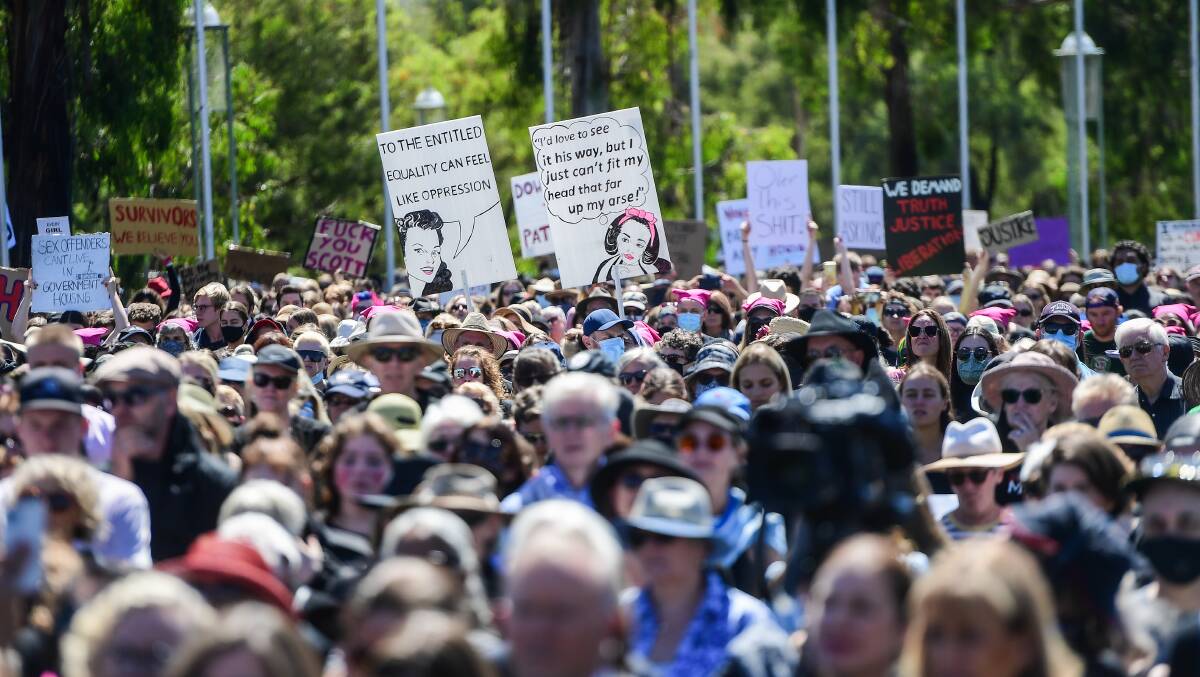
Damages won from workplace sexual harassment complaints have quadrupled in the past seven years, a new analysis has revealed, but legal experts warn a prohibitive system and structural barriers stop many cases from being pursued that far.
Subscribe now for unlimited access.
or signup to continue reading
A landmark workplace sexual harassment case in 2014, which saw IT executive Rebecca Richardson awarded more than $100,000 for distress caused by sustained workplace sexual harassment, has resulted in damages from subsequent cases quadrupling, a paper from the Australian National University has shown.
But out of the 48 cases that have since cited the Richardson judgment, only nine concerned sexual harassment.
Of those nine cases, six were awarded damages, averaging $79,333 or an increase of four times the amount cited during the 2014 case.
On face value, the figures represent a step in toward a more positive direction but the reality is more bleak.
Paper co-author and final year law student, Madeleine Castles, said getting to that point alone was a tough road many did not take.
"For a potential complainant, the costs of pursuing litigation are often so prohibitive that they'll never go through the process," Ms Castles said.
"Even if you can achieve some form of settlement outcome, it's often not worth the financial costs.
"As a result, most people settle early, and they settle confidentially so it ensures that all of this stays outside the public sphere."
It comes as the Community and Public Sector Union has launched its own survey on Monday evening to ask members about the prevalence of sexual harassment within the workplace.
"We've had some members express concerns around policies and processes governing employee wellbeing and respectful behaviours in the workplace, specifically referencing sexual harassment," said union national secretary Melissa Donnelly in an email to members.
"This survey will allow us to develop an informed position on how your employer can better prevent and respond to concerns about sexual harassment."
The Canberra Times has previously reported the public sector does not have a clear central collection of reported sexual violence incidents, calling into question how trends or problems could be identified.
READ MORE:
Beyond the public sector, Ms Castles explained the "taxing process" has resulted in a sheath of secrecy within workplaces while the true prevalence remained a mystery.
"We don't actually know the breadth and depth of sexual harassment, because it stays behind closed doors," Ms Castles said.
"[It's] hugely taxing on a complainant's mental health and requires them to repeatedly relive the harassment."
While a quadrupling of damages is welcome light at the end of the tunnel for complainants, Ms Castles said it wasn't doing much for broader societal change.
The paper's findings showed that higher damages being weren't enough for encourage workplaces to fix the environment and culture leading to workplace harassment.
It was tougher for some depending on their place on the workplace hierarchy, Ms Castles added.
"There is a big imbalance of power in terms of who can bring these claims and who has the bargaining power to demand change in their workplace," Ms Castles said.
"The impact you have on actually shifting that culture and shifting the structural factors in that workplace that are resulting in or allowing that sexual harassment to occur is pretty limited."
The solution isn't simple, Ms Castles said, but an obvious first step was looking to a recent report by Sex Discrimination Commissioner Kate Jenkins.
The nearly 1000-page report, delivered in March 2020, offered 55 recommendations to solve the issue but the government has yet to implement one nor has issued a formal response to it.
Ms Castles said this was a good starting point to addressing the issues.
Employment law expert and paper co-author, Kieran Pender, said more research in the field was needed to better understand the scope.
A second phase of the legal research, Mr Pender said, would focus on plaintiff experiences litigating sexual harassment claims.
"Comprehensively addressing workplace sexual harassment is a complex challenge," Mr Pender said.
"We hope our research goes a small way to improving one dimension of that broader puzzle: the legal system and the availability of adequate remedies for those who are sexually harassed at work."
The paper, co-authored by Castle, Pender and their Monash colleague Tom Hvala, was published this week in the Federal Law Review.
Our journalists work hard to provide local, up-to-date news to the community. This is how you can continue to access our trusted content:
- Bookmark canberratimes.com.au
- Download our app
- Make sure you are signed up for our breaking and regular headlines newsletters
- Follow us on Twitter
- Follow us on Instagram


